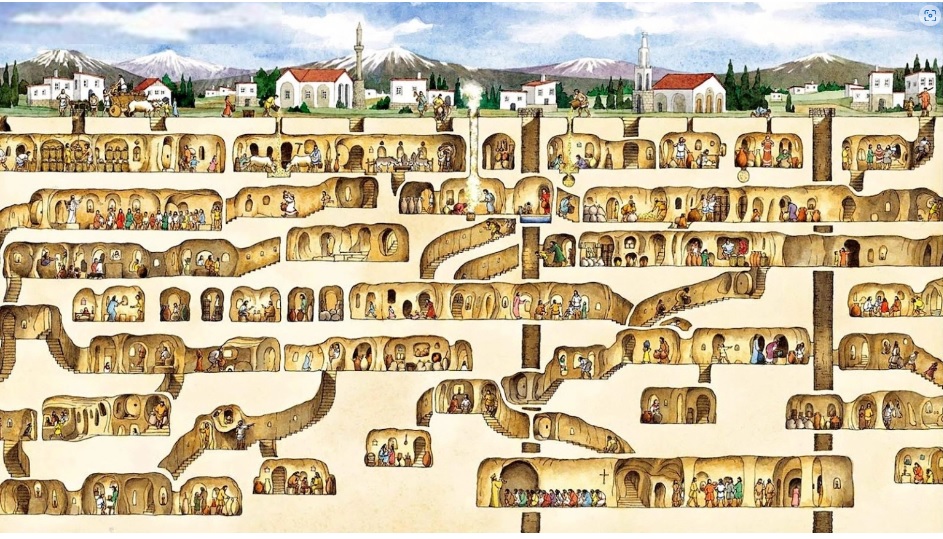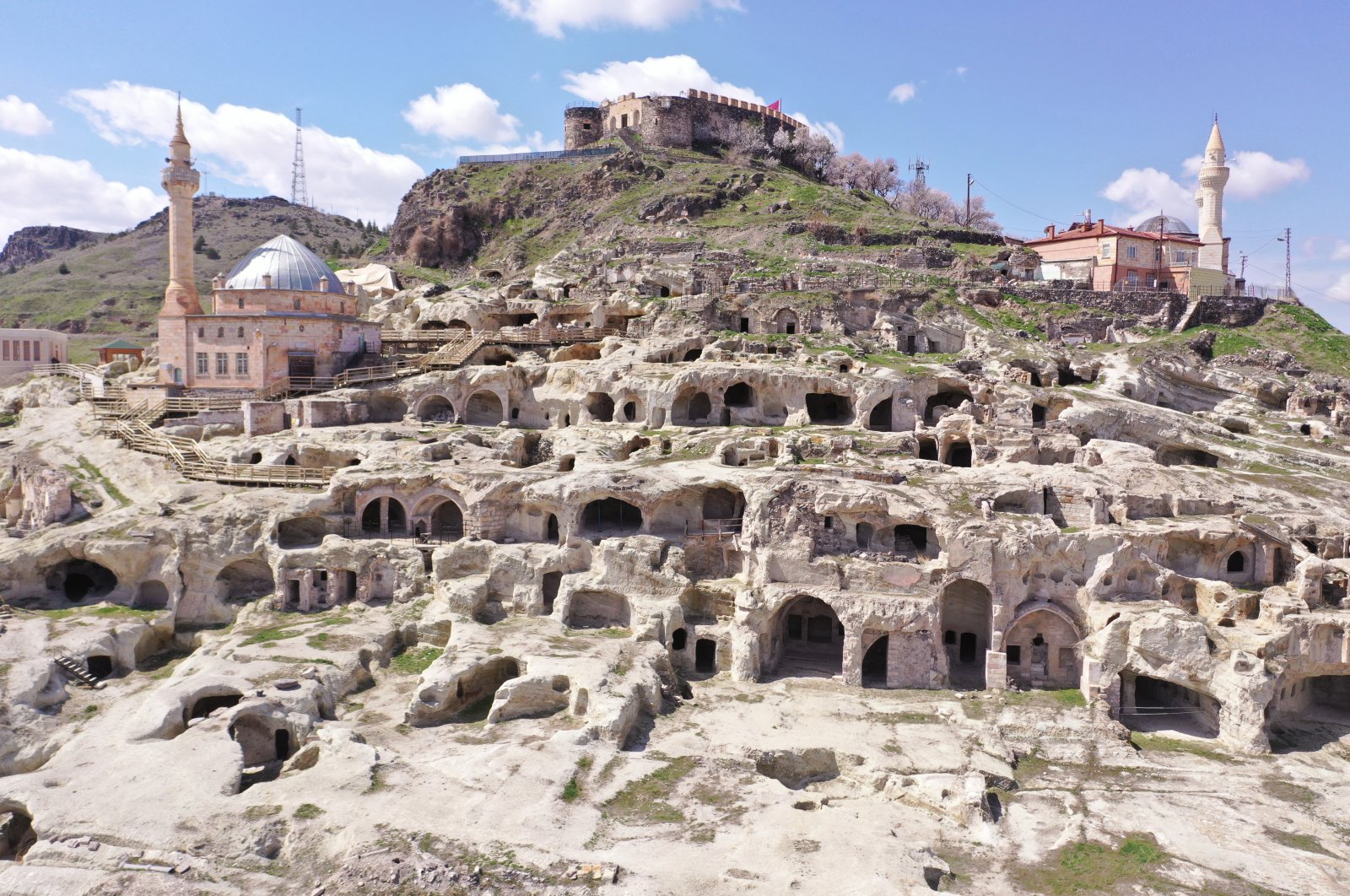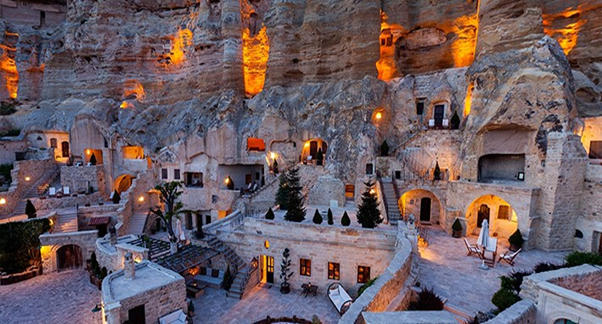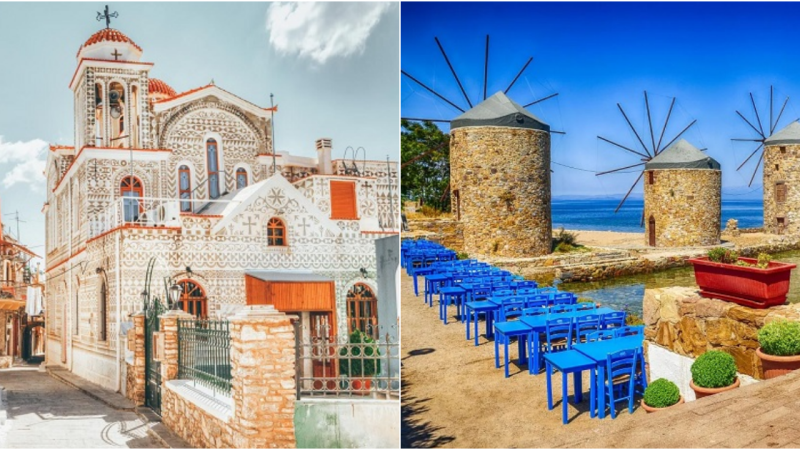Unique Prehistoric Underground City, a World Heritage Site in Turkey
Since 1985, UNESCO has recognized the “Rock Sites of Cappadocia” as a World Heritage Site. These are cave dwellings and religious structures located in the Cappadocia region of Central Turkey.
The Cappadocia region, covered in a layer of tuff rock formed from volcanic ash over approximately 20 million years, has been inhabited since prehistoric times. The soft and workable nature of this rock led people to carve it into underground dwellings and chambers during the Copper Age. Over time, these structures evolved into a vast underground city beneath the surface.

Archaeologists have discovered nearly 40 underground cities in Cappadocia, although only a small fraction is accessible to the public. These cities are interconnected by long passageways, and the population in each city varied, ranging from 3,000 to 30,000 inhabitants. Özkonak may be the largest city, mostly unexplored, with an estimated population of 60,000, but the most famous ones are Derinkuyu and Kaymakli.
Derinkuyu, located in the Derinkuyu district of Nevşehir province, reaches a depth of 85 meters and can accommodate around 20,000 people, along with their livestock and food stores. It is one of the remarkable underground complexes found throughout the Cappadocia region. These dwellings belonged to the Hittites, the ancient Anatolian people. Their homes resembled wells on the surface, expanding below with entrances for livestock, while humans accessed them through stairs. Families lived together with their goats, sheep, livestock, and pigeons.
One notable archaeological project led to the discovery of the fascinating underground city of Derinkuyu, which housed 20,000 inhabitants.
Inside these cities, labyrinthine tunnels with large stone doors, about a meter high, could be sealed shut, and there were peepholes in the center to observe outside. Some cities also had holes in the ceilings of their houses, used for attacking enemies with spears.
The hidden gem of Göreme is the Dark Church, a Christian settlement. In the early centuries after the birth of Jesus, hermits hid in natural caves or carved into the rock to create their homes. Over time, these evolved into stone structures both below and above the ground, forming a city. From 642, Arab invasions began, followed by the Byzantines. By the 11th century, around 3,000 churches were carved into the rock. These churches were simple and rarely or never decorated.
In contrast to the underground cities, Uçhisar and Ortahisar feature castles built on high rock formations ranging from 60 to 90 meters, with multiple entrances leading to chambers that could accommodate around 1,000 people.
Today, the underground cities in the Cappadocia region are a designated World Heritage Site, attracting millions of visitors annually and providing a significant source of revenue for Turkey.







